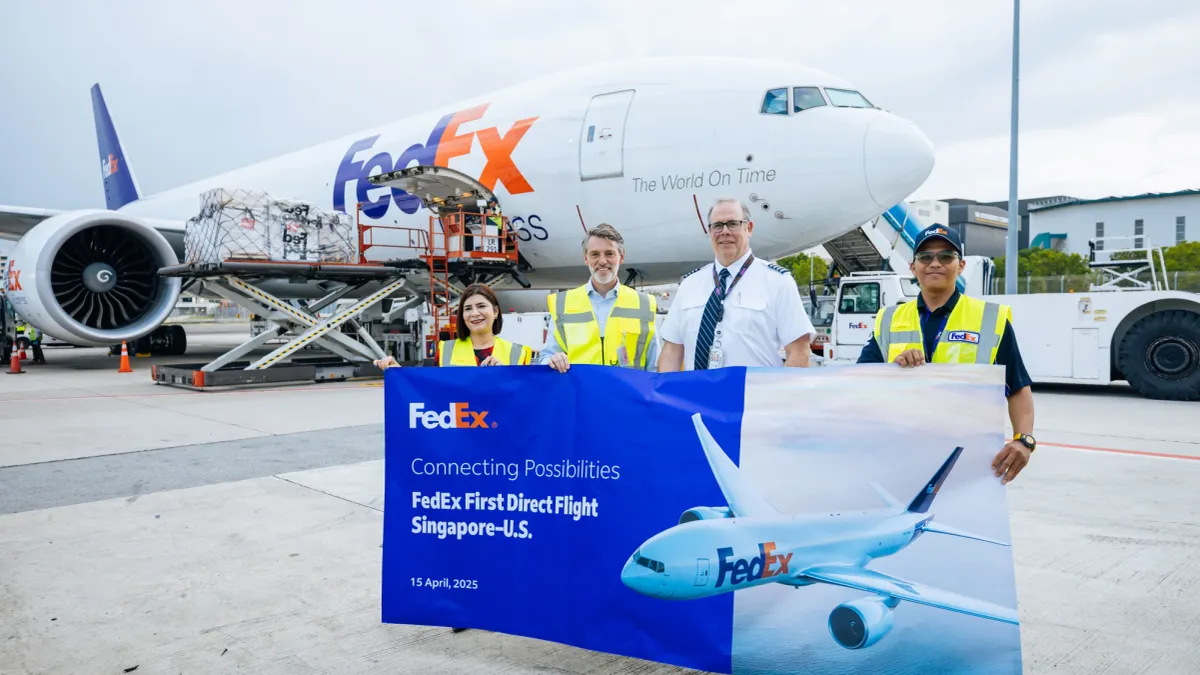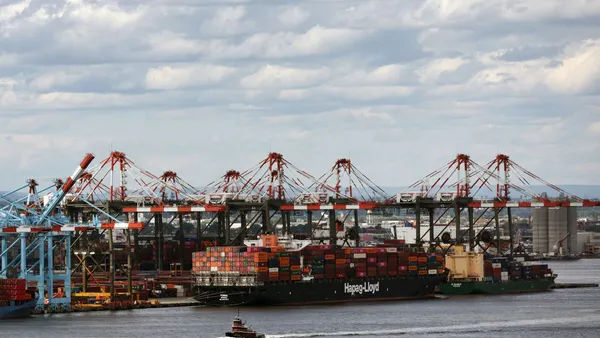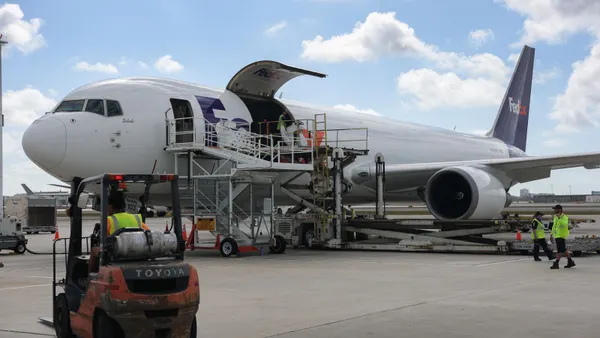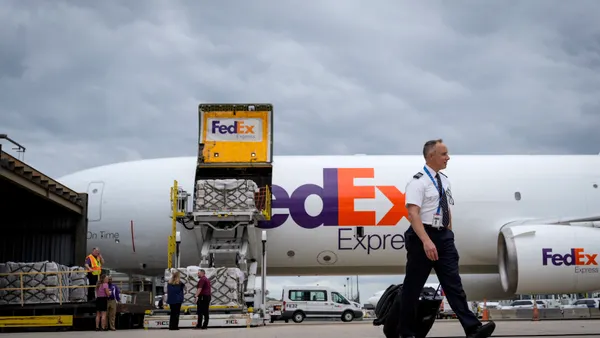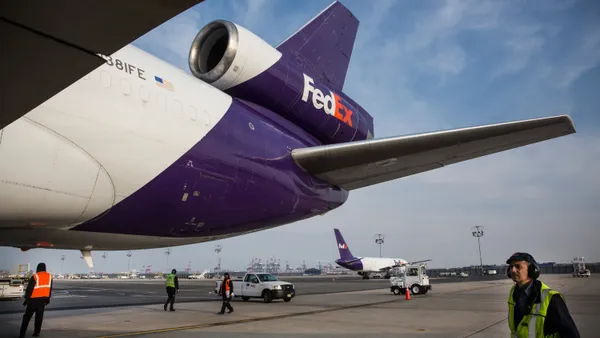Dive Brief:
- FedEx slashed air cargo capacity between Asia and the Americas by more than 35% in the first week of May, compared with April, according to a June 24 earnings call.
- Part of that reduction included cutting FedEx’s third-party capacity by 50%, President and CEO Raj Subramaniam said.
- “We continue to evaluate trade patterns and are prepared to alter our roots and capacity commitments should demand shift with a focus on Asia to Europe and Asia to Latin America,” Subramaniam said.
Dive Insight:
FedEx is flexing its air network as trade uncertainty shifts cargo flows, and the carrier is currently seeing growth in Southeast Asia, said Subramaniam. He added that the company has been introducing network changes in the region as a result, “allowing us to consolidate from multiple points into a centralized gateway.”
FedEx launched its first direct 777F flight in April between Singapore (SIN) and Anchorage, Alaska, (ANC) in a bid to capture growing demand out of Southeast Asia, Subramaniam said.
For FedEx, the route aims to improve transit times, enabling shipments picked up on Saturday from Malaysia, Singapore and Thailand to arrive in the U.S. on Monday, per a press release. Currently e-commerce, high-tech electronics and manufactured goods are driving demand on the Southeast Asia to U.S. corridor.
“We had to be careful making sure that our capacity is right in markets, but we can move faster than how manufacturing can move,” Subramaniam said during the call. “And we get the feedback of what's happening on the ground from the bottom up.”
The flight operates six times per week, with a weekly return flight from ANC-SIN, according to the press release. FedEx aims to ramp up the frequency of the return flight to five times per week.
De minimis pressures
Based on the current trade environment this year, FedEx expects to feel pressure on its Transpacific trade lane, EVP and Chief Customer Officer Brie Carere told analysts. A majority of that impact is driven by the end of the de minimis exemption, which allows sub-$800 packages to enter the U.S. without duties, for China and Hong Kong
Indeed, China-U.S. volumes plummeted after tariffs took hold in May, and those levels stagnated throughout the rest of the quarter, Carere said.
Previously, tariffs at their peak were at 168% for low-value e-commerce shippers out of China, Carere said during an investors conference in May. With the China-U.S. corridor being its largest trade lane, Carere said Transpacific volumes will be significantly impacted.
A significant portion of FedEx’s Transpacific business comes from China-based e-commerce exports, Carere said at the conference. “But not just for large customers. It's for all size customers coming out of China.”
The end of the de minimis exemption for products from China and Hong Kong isn’t just impacting FedEx’s air cargo demand, however. Several other carriers are considering capacity shifts in a bid to accommodate drops in volume and excess capacity.
Regardless, FedEx still reported a 5% year over year increase in international air freight revenue in Q4, Subramaniam said. The revenue bump was attributed to FedEx’s Tricolor initiative which aims to match capacity with current demand.
Fleet adjustments
In other adjustments, the carrier has removed a net 31 jet aircraft from its fleet over the last three years, John Dietrich, FedEx EVP and CFO, said on the call.
“These actions are aligned with the company's fleet reduction and modernization strategy as we continue to improve global network efficiency and better align air network capacity with anticipated demand,” Dietrich told analysts.
While FedEx grounded some of its aircraft, the carrier is also looking to modernize its fleet. In March, ATR said FedEx is acquiring 10 ATR 72-600 freighters to replace its legacy ATR fleet. ATR freighters currently handle feeder operations for smaller markets.
Approximately 85% of the company’s FY 2025 capital expenditure, Dietrich said, was tied to an aircraft and vehicle modernization push, along with network optimization and automation.



